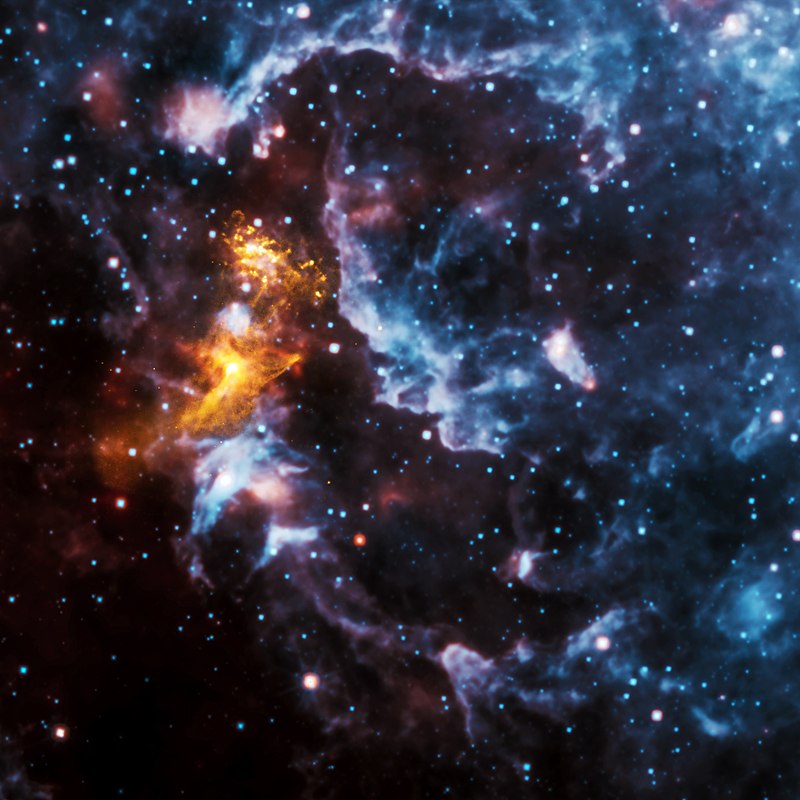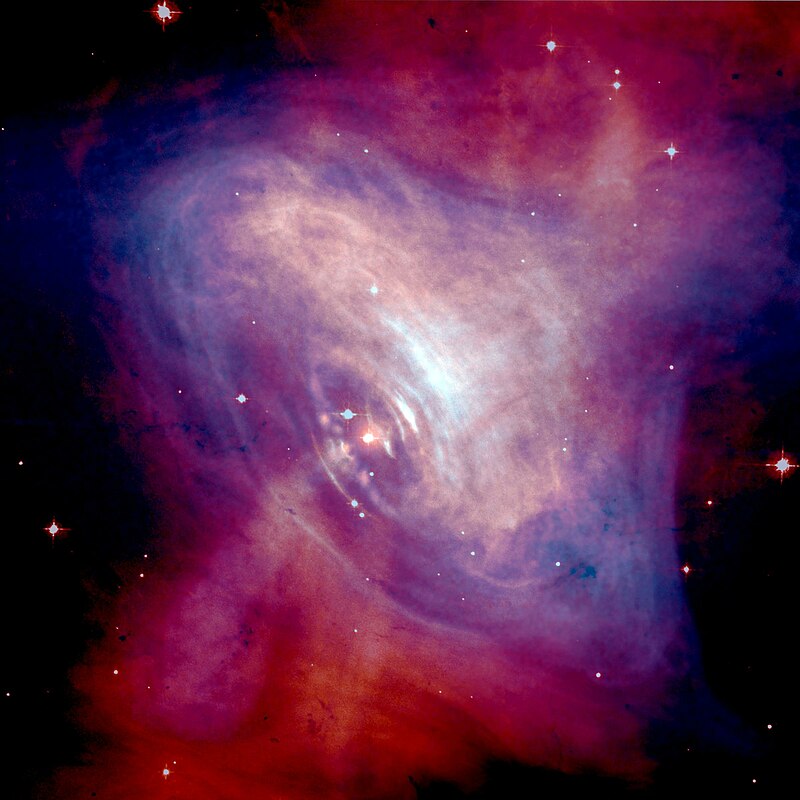Have you ever looked at the boundless night sky and felt the overwhelming power of nature? The universe is composed of vast space with puzzling beauty and mystery. Its composition created by celestial bodies surpasses the limits of human understanding. It is indeed a limitless unthinkable mystery. Among these mysterious wonders, pulsars, and quasars are two of the most intriguing and puzzling entities.
Pulsars and quasars are two fascinating astronomical phenomena that have attracted the attention of scientists and astronomers for decades. Although both are celestial bodies found in outer space powered by extremely dense collapsing bodies and share specific properties due to their extreme nature; however, they are different phenomena. They differ in nature, characteristics, and origin.
What are Pulsars?
Pulsars were first discovered in 1967 by astronomers Jocelyn Bell Burnell and Antony Hewish. But Pulsars are highly compact and dense, with a mass greater than that of the Sun but compressed into a sphere only a few kilometers in diameter. They are rotating neutron stars, dense stellar cores left behind by stellar explosions, and then exploding in a catastrophic event called a supernova. There was a prediction of their existence in 1932 when Russian physicist Lev Landau discovered neutrons and wondered if stars might contain “neutronic” matter deep in their cores. Currently, pulsars detection is about 750,000, spanning different epochs.
Discovery of Pulsars
Pulsed stars were first discovered by a graduate student named Jocelyn Bell Burnell and her mentor Antony Hewish at the University of Cambridge, England, in 1967. They were making observations using radio telescopes to study quasars when they detected a peculiar and regular pattern of radio signals. These signals appear as very precise and periodic radio waves, ranging from a few milliseconds to a few seconds. They built a radio antenna array to monitor more than 1,000 radio galaxies. Unlike optical telescopes that collect and focus light at visible wavelengths, radio telescopes tune long-wavelength electromagnetic waves and radio waves.
At first, they considered the possibility that these signals were of artificial origin, possibly from an extraterrestrial civilization. They even named the signs “LGM” for “Little Green Men.” However, further observations and analysis suggest that these signals are more likely to be natural phenomena.
Eventually, it was determined that these signals came from rapidly rotating neutron stars, later known as “pulsars.” Neutron stars are incredibly dense remnants of massive stars that have become supernovae. Their magnetic fields and radiation beam produce the observed pulsating signals as they rotate.
Characteristics of Pulsars
- They are composed of 10% electrons and 10% neutrons and emit steady pulses of electromagnetic radiation.
- Pulsars are made up of three layers:
a solid core, a liquid mantle, and a thin solid crust.
- They are fast, rotating neutron stars with particle jets and travel roughly the speed of light flowing across their magnetic poles.
- When they rotate, the beam of pulsar points in a different direction, and thus it’s impossible to detect them.
- Pulsars cannot generate new energy since fusing elements is unnatural.
- Since they cannot generate new heat, pulsars’ lifespan is shorter than other astronomical entities.
What are Quasars?
Quasars, short for “standard stellar radio sources,” are incredibly bright and energetic celestial objects believed to be powered by supermassive black holes at the centers of distant galaxies. These black holes are surrounded by a disk of accreted gas and dust, which heats up and emits intense radiation that swirls into the black hole. This process produces the incredible amount of energy that characterizes quasars.
Although, at first, quasars were thought to be stars, thus the name means “almost like a star radio source,” a discovery pointed quasars to be a whole lot different from a star, but the name was not changed anymore. Quasar is very active and luminous. The largest known quasar is J0313–1806, which has a mass more than 1.6 billion times that of the Sun and lies 13 billion light years away. Such a large and bright object can only be seen at such a great distance from us. Currently, more than 200,000 quasars have been identified.
Discovery of Quasars
While theoretical predictions preceded observations of pulsars and neutron stars, quasars required a series of observations before any theoretical understanding was made. Quasars are extremely luminous and distant celestial objects that emit vast amounts of energy, primarily light and radio waves. They were first observed and identified as a distinct class of astronomical objects in the early 1960s.
In the 1950s, radio astronomy emerged as a new field of study. Radio telescopes detect and study radio waves emitted by various celestial objects. In 1960, astronomer Allan Sandage identified an optical counterpart for a radio source known as 3C 48. Individual radio telescopes had a lower resolution than optical telescopes of the same size. For the approximate coordinates of a stellar object known as 3C 48, experts used the 200-inch telescope at the Palomar Observatory in California.

Another critical discovery came in 1963 when astronomer Maarten Schmidt studied the spectrum of quasar 3C 273. He noticed that the spectral lines in the quasar’s light were highly redshifted, indicating that the object was moving away from Earth at a significant fraction of the speed of light.
Astronomers gathered more data about quasars, helping to understand better their properties, behavior, and role in the universe. Quasars have provided valuable information about the early universe, the nature of black holes, and the processes that govern galaxy formation and evolution.
Characteristics of Quasars
- Quasars have a very high luminosity and are found at the centers of several galaxies.
- High-speed gas spirals power them.
- Quasars likely formed from black holes.
- They can release energy capable of lighting up an entire galaxy and the equivalent of millions of suns.
- They have a relatively short lifespan because quasars consume their mass so fast.
Similarities of Pulsars and Quasars
1. Emission of Radiation:
Both pulsars and quasars release electromagnetic beam radiation across the spectrum of their poles.
2. Speed
Quasars and pulsars “turn off” relatively fast due to their high-energy dissipation.
3. Nature
Pulsars and quasars are exotic and extreme objects in the universe, representing some of the most energetic and powerful phenomena known.
4. Cycle and Span
Both are only stages of other objects’ more extensive life processes—pulsars of a star and Quasars of a black hole.
5. Formation
They are both formed from massive objects. Pulsars in massive supergiant stars, and quasars from supermassive black holes. Additionally, both are created out of collapsed stars.
6. Discovery
They were both discovered from observations on radio frequencies.
Pulsar’s first discovery was confusing and led to the humorous use of the term “LGM” (Little Green Men).
Quasars were discovered earlier, in the 1960s, and their true nature as extremely distant and energetic objects was later revealed. Both are essential in understanding the universe’s early formation and galaxies’ evolution.
Differences of Pulsars and Quasars
1. Nature and Origin
Pulsars are a type of star. Quasars are a type of black hole. While the first was formed as the remnants of giant stars that have undergone supernova explosions, the latter was powered by supermassive black holes at the centers of galaxies.
2. Location
Quasars only exist in the center of a galaxy, while pulsars can exist anywhere.
3. Size
Pulsars are relatively small and dense objects, usually about 10 to 20 kilometers in diameter. Quasars are associated with the entire galaxy and are much larger in scale.
4. Composition
Pulsars consist primarily of neutrons packed tightly together, while quasars contain the presence of a supermassive black hole at their core.
5. Speed
Pulsars spin much faster than quasars.
6. Expanse
There are many times more pulsars than quasars in the universe.
Conclusion
With the grand mystery of the universe, pulsars and quasars stand as symbols of the boundless variety and complexity of the cosmos. As the smooth spinning dead stars, Pulsars became the cosmic timekeepers that revealed the wonders of extreme physics and the mysterious nature of neutron stars. Quasars, conversely, were formed when supermassive black holes have too much matter around them to produce energy and light beyond almost anything around them. They became watchers that offer glimpses into the distant past, shaping our understanding of cosmic evolution. Both unlocked a deeper understanding of what lies beyond what our eyes can see.




